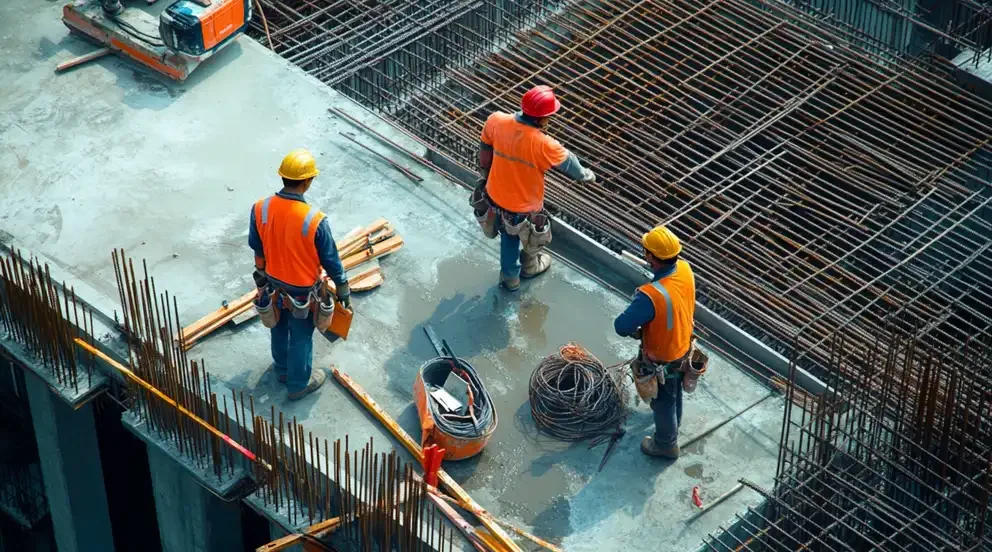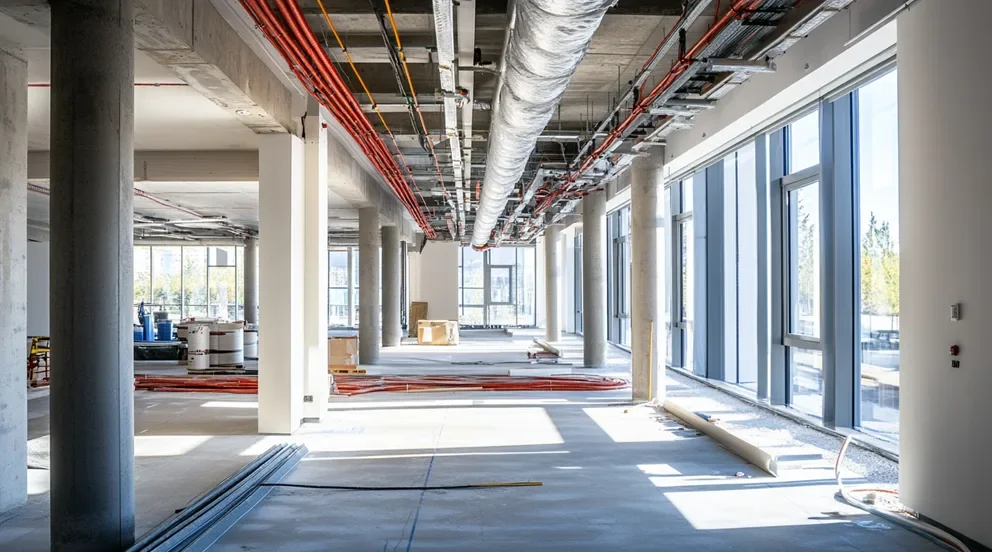The best construction scheduling software is usually the one that offers businesses the most flexibility and customization options, making it easier for them to manage their projects effectively. These types of software are typically user-friendly and allow for easy implementation, making them accessible for businesses of all sizes.
One of the top features of the best construction scheduling software is the ability to create and modify schedules in real-time. This allows project managers to keep track of the progress of each task and make necessary adjustments quickly. The software should also offer visual representations of the schedule, making it easier to understand and identify any potential conflicts or delays.
Another important feature is the ability to assign tasks to team members and set deadlines. This ensures that everyone is aware of their responsibilities and helps to keep the project on track. Some software also allows for the integration of calendars, making it easier to plan and schedule meetings and other important events within the project timeline.
The best construction scheduling software also offers collaboration and communication tools. This allows team members to share updates and information, making it easier to coordinate and work together. Some software even offers mobile capabilities, allowing team members to access the schedule and make updates on the go.
Flexibility is also a key factor in the best construction scheduling software. It should be able to adapt to changing project requirements and unforeseen delays or issues. This ensures that the schedule remains accurate and up-to-date, helping to avoid costly setbacks.
In conclusion, the best construction scheduling software is one that offers easy customization, real-time updates and collaboration, integration with calendars, and flexibility. It should also be user-friendly and accessible for businesses of all sizes. Investing in a high-quality construction scheduling software can greatly improve project management and lead to successful and timely project completion.
Real-Time Updates: The Key to Effective Project Management with Construction Scheduling Software
Real-time updates are a crucial feature of the best construction scheduling software. This feature allows project managers to stay informed and make necessary adjustments quickly, ensuring that the project stays on track and avoids costly delays.
With real-time updates, project managers can easily view the progress of each task and identify any potential conflicts or issues. This helps them make quick decisions and adjustments to the schedule to avoid any delays. The software should also offer visual representations of the schedule, making it easier to understand and communicate to team members.
Assigning tasks and setting deadlines is another important aspect of effective project management. Real-time updates allow project managers to assign tasks to team members and set deadlines according to the progress of the project. This ensures that everyone is aware of their responsibilities and can work together to meet the project’s timeline.
Collaboration and communication are key to successful project management. With the best construction scheduling software, team members can share updates and information, allowing for efficient coordination and collaboration. This feature is especially useful for remote teams or teams working on different job sites.
Real-time updates also offer the benefit of integration with calendars. This allows project managers to easily schedule meetings and other important events within the project timeline. This helps to plan and allocate resources effectively, ensuring that the project stays on track.
Lastly, flexibility is essential for effective project management. Real-time updates allow for any changes or unforeseen delays to be quickly incorporated into the schedule. This ensures that the schedule remains accurate and up-to-date, helping to avoid costly setbacks.
Customizable and User-Friendly: What to Look for in the Best Construction Scheduling Software
When searching for the best construction scheduling software, businesses should look for a program that offers customization and user-friendly features. This type of software allows for flexibility and ease of use, making it accessible for businesses of all sizes and project types.
Customization is an essential feature of the best construction scheduling software. This allows businesses to tailor the software to their specific needs and project requirements. For example, the software should allow for the creation of unique schedules and the ability to modify them in real-time. This ensures that the schedule accurately reflects the progress and changes of the project.
User-friendly features are also crucial for effective project management. The software should be easy to navigate and understand, with a clean and organized interface. This makes it accessible for users of all skill levels and ensures that everyone can quickly learn how to use the program.
Another important aspect is the ability to integrate with other tools and software. The best construction scheduling software should offer integration with other popular programs such as Microsoft Project and Google Drive. This allows for seamless communication and data sharing, making it easier for team members to collaborate.
Mobile capabilities are also becoming increasingly important in today’s fast-paced business world. The best construction scheduling software should offer mobile access, allowing team members to make updates and view the schedule on the go. This helps to improve communication and efficiency, especially for remote or on-site teams.
Collaboration and Communication Tools: Enhancing Teamwork with Construction Scheduling Software
Collaboration and communication are essential for successful teamwork in construction projects. The best construction scheduling software offers tools and features that help team members work together effectively, improving project management and overall project success.
One key tool is the ability to share updates and information within the software. This allows team members to stay informed about the progress of the project and any changes or updates. It also promotes transparency and helps to avoid miscommunication or confusion.
The best construction scheduling software also offers real-time collaboration features. This allows team members to work together on the schedule, making updates and changes in real-time. This is especially useful for remote teams or teams working on different job sites, as it promotes efficient communication and eliminates delays caused by waiting for updates or approvals.
Another important aspect is the ability to assign tasks and set deadlines within the software. This ensures that everyone is aware of their responsibilities and can work together to meet project timelines. It also allows for easy communication of any potential delays or issues, helping to keep the project on track.
Integration with other tools, such as calendars and messaging platforms, is also beneficial for collaboration and communication. This allows team members to easily schedule meetings and share important information, making it easier to coordinate and work together.
Integrating Calendars for Efficient Scheduling in Construction Projects
Integrating calendars is a highly valuable feature in the best construction scheduling software. This tool streamlines project management by allowing project managers to easily schedule and track meetings, deadlines, and other important events within the project timeline.
The integration of calendars with construction scheduling software offers a variety of benefits. First, it helps project managers to avoid scheduling conflicts or overlaps. By viewing all team members’ calendars in one place, project managers can easily identify the best time for meetings or deadlines that work for everyone.
Additionally, integrating calendars with construction scheduling software allows for more efficient resource allocation. With a clear overview of individual schedules, project managers can better plan the allocation of resources to avoid conflicts or shortages.
This integration also promotes better communication within the project team. By syncing calendars with the software, team members can easily view any upcoming meetings or deadlines, ensuring that everyone is on the same page and working towards the same goals.
The integration of calendars also offers the benefit of real-time updates. As schedules change, the calendars are automatically updated, allowing for seamless collaboration and minimizing the risk of miscommunications or confusion.
How the Best Construction Scheduling Software Adapts to Changing Project Needs
The best construction scheduling software must be able to adapt to changing project needs and requirements. This is an essential feature that ensures the schedule remains accurate and up-to-date, helping to avoid costly delays or setbacks.
One way that the best construction scheduling software adapts is through the ability to make real-time updates. As project needs change, the schedule can be easily modified, with updates reflecting in the schedule in real-time. This allows project managers to make quick decisions and adjustments to avoid conflicts or delays.
Another aspect that contributes to the software’s adaptability is its ability to offer a wide range of customization options. This allows businesses to tailor the software to their specific needs and project requirements, ensuring that the schedule accurately reflects the project’s progress.
Flexibility is also a key factor in the best construction scheduling software. This includes the ability to add or remove tasks, change deadlines, and adjust resources as needed. This helps project managers to respond to changing project needs and unexpected delays or issues in a timely and effective manner.
The best construction scheduling software also offers the option to collaborate and communicate with team members. This makes it easier to discuss and make decisions on any changes or adjustments in the project, ensuring that everyone is aware of the updates and on the same page.
Key Takeaways
In conclusion, the best construction scheduling software offers a variety of features and benefits that can greatly enhance project management and improve overall project success. These include real-time updates, visual representations of the schedule, collaboration and communication tools, flexibility, customization, user-friendly features, integration with calendars, and adaptability to changing project needs. By investing in high-quality construction scheduling software, businesses can streamline their project processes and achieve timely and successful project completion.



